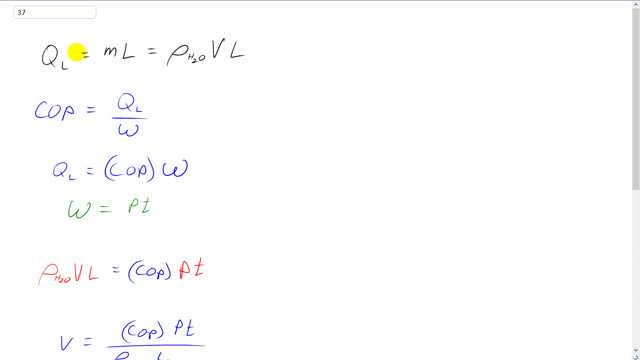
What volume of water at can a freezer make into ice cubes in 1.0 h, if the coefficient of performance of the cooling unit is 6.0 and the power input is 1.2 kilowatt?

In order to watch this solution you need to have a subscription.
This is Giancoli answers with Mr. Dychko. The total energy needed by this water that's in the freezer, since it's already at zero degrees, is just the energy needed to change its phase from liquid into solid. So that's going to be the mass of the water times its latent heat of fusion and the mass is going to be the density of water times its volume times latent heat of fusion. So coefficient of performance is that amount of energy divided by the work that it takes to run the refrigerator and then we can solve her Q L by multiplying both sides by W and then we get this line here and W also can be thought of as power multiplied by time because power is defined as the work per time, so multiply both sides by t and you get W is Pt so we substitute Pt in place of W and substitute density of water times its volume times its latent heat of fusion in for Q L and then solve for V. So, V is coefficient of performance times power times time divided by density times latent heat of fusion. So it’s 6.0, coefficient of performance, times 1.2 times ten to the three joules per second of power needed to run the refrigerator multiply it by an hour converted into seconds and then divide by density of water at 1.0 times ten to the three kilograms per cubic meter times latent heat of fusion 3.33 times ten to the five joules per kilogram and you get this many cubic meters. Which we have to convert into liters to make the number that makes more sense and multiply by one litre for every one times ten to the minus three cubic meters and you get 78 liters of water could be converted into ice.